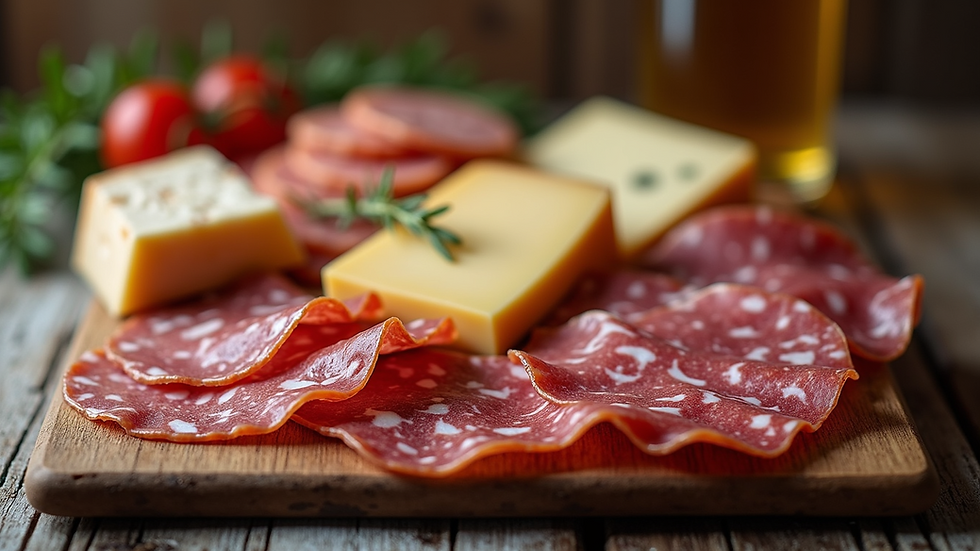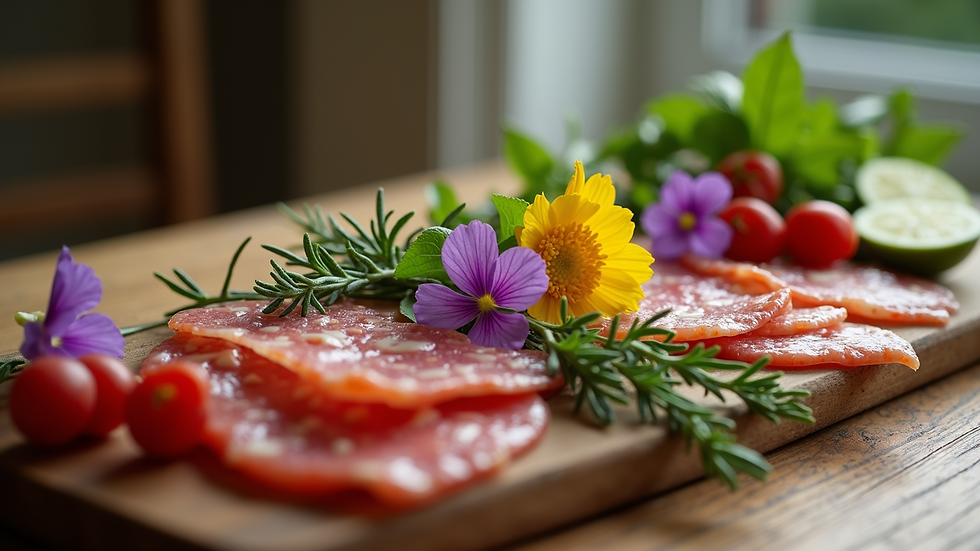Crafting the Perfect Charcuterie Board for Any Occasion
- Mary Siders
- Sep 3
- 3 min read
Creating a stunning and delicious charcuterie board is an art that anyone can master. Whether you're hosting a casual get-together, a formal dinner, or a festive celebration, a well-crafted charcuterie board can impress your guests and elevate the experience. This guide will walk you through the essentials of assembling the perfect charcuterie ideas, from selecting ingredients to arranging them beautifully.
Perfect Charcuterie Ideas: Building Your Board Step-by-Step
When it comes to crafting the perfect charcuterie ideas, the key is balance and variety. Start by choosing a mix of flavors, textures, and colors to keep your board interesting and inviting.
Step 1: Choose Your Meats
Select a variety of cured meats such as prosciutto, salami, chorizo, and soppressata. Aim for different textures and flavors - some spicy, some mild, some thinly sliced, others chunkier. This variety will cater to different tastes and add depth to your board.
Step 2: Add Cheeses
Include a range of cheeses with different textures and flavors. Soft cheeses like brie or goat cheese, semi-hard cheeses like gouda or cheddar, and hard cheeses like parmesan or manchego work well together. Consider adding a blue cheese for a bold option.
Step 3: Incorporate Fresh and Dried Fruits
Fresh fruits like grapes, figs, and apple slices add sweetness and freshness. Dried fruits such as apricots, dates, and cranberries provide chewiness and concentrated flavor.
Step 4: Include Nuts and Crackers
Nuts like almonds, walnuts, and pistachios add crunch and richness. Choose a variety of crackers and breadsticks to complement the meats and cheeses.
Step 5: Add Condiments and Extras
Small bowls of honey, mustard, or fruit preserves can enhance the flavors. Olives, pickles, and marinated vegetables add a tangy contrast.
Step 6: Arrange with Style
Use a large wooden board or slate platter. Start by placing the cheeses and meats, then fill in gaps with fruits, nuts, and crackers. Use small bowls for wet items like olives or dips. Remember to leave some space for guests to easily pick items.

What does charcuterie mean literally?
The word "charcuterie" comes from the French words chair meaning "flesh" and cuit meaning "cooked." Traditionally, it refers to the art of preparing and assembling cured meats. Over time, the term has expanded to include a variety of accompaniments like cheeses, fruits, nuts, and spreads that complement the meats.
Understanding this origin helps appreciate the focus on quality and craftsmanship in creating a charcuterie board. It’s not just about piling food on a platter but about curating a harmonious selection that highlights the flavors and textures of each component.
Tips for Selecting Ingredients That Impress
Choosing the right ingredients is crucial for a memorable charcuterie experience. Here are some practical tips:
Go local and seasonal: Use locally sourced meats, cheeses, and produce when possible. Seasonal fruits and nuts will be fresher and more flavorful.
Mix textures: Combine creamy, crunchy, chewy, and crisp elements to keep the palate engaged.
Balance flavors: Include salty, sweet, tangy, and spicy items to create a dynamic tasting experience.
Consider dietary preferences: Offer vegetarian options like hummus, roasted vegetables, or vegan cheeses to accommodate all guests.
Label your board: If you’re serving a variety of cheeses and meats, small labels or tags can help guests identify each item.
How to Pair Drinks with Your Charcuterie Ideas
Pairing drinks with your charcuterie board can enhance the overall enjoyment. Here are some pairing suggestions:
Wine: Light reds like Pinot Noir or Beaujolais, crisp whites like Sauvignon Blanc or Chardonnay, and sparkling wines like Prosecco or Champagne work well.
Beer: Choose light lagers, wheat beers, or fruity ales to complement the flavors without overpowering them.
Non-alcoholic: Sparkling water with a splash of fruit juice, herbal iced teas, or non-alcoholic sparkling wines are great options.
Remember, the best pairing is one that you and your guests enjoy, so feel free to experiment.

Presentation Ideas to Wow Your Guests
Presentation is key to making your charcuterie board stand out. Here are some creative ideas:
Use different levels: Elevate some items using small bowls or stands to add dimension.
Color coordination: Arrange items by color to create a visually appealing gradient or pattern.
Add edible flowers or herbs: Fresh herbs like rosemary or thyme and edible flowers add a pop of color and aroma.
Use unique serving boards: Slate, marble, or vintage trays can add character.
Provide the right tools: Include cheese knives, toothpicks, and small spoons for easy serving.
These touches show attention to detail and make the experience more enjoyable.

Bringing It All Together
Crafting the perfect charcuterie board is about combining quality ingredients, thoughtful pairings, and beautiful presentation. With these tips and ideas, you can create a board that suits any occasion and delights every guest. Whether you prefer classic combinations or adventurous flavors, the possibilities are endless. So gather your favorite ingredients, get creative, and enjoy the art of charcuterie!






Comments